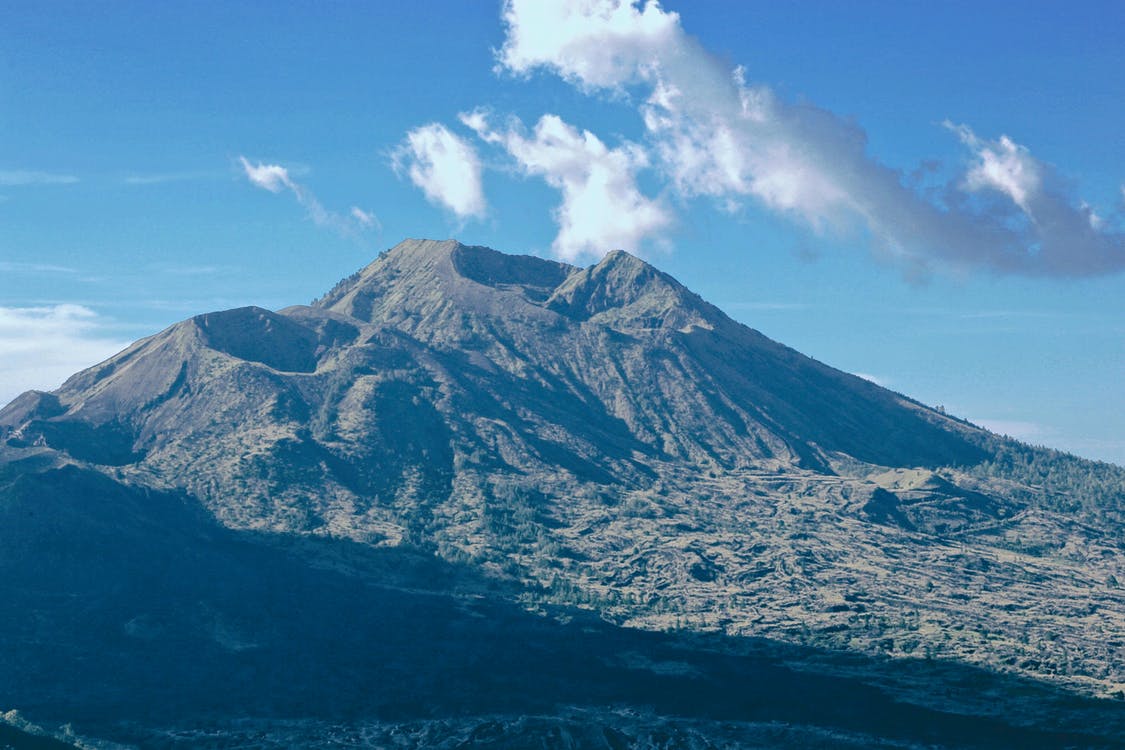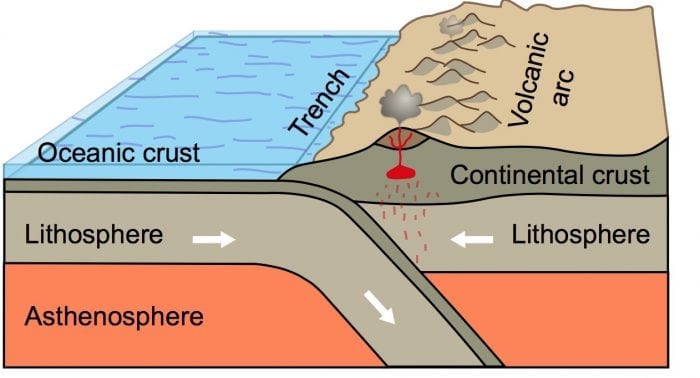
Mount Agung (Gunung Agung), is a stratovolcano on one of the Lesser Sunda Islands of Indonesia known as Bali and along the Pacific Ring of Fire and began experiencing increased activity in September 2017.
The volcano has been largely dormant since its catastrophic eruption in 1963 which killed an estimated 1,500 people. In September 2017 Mt. Agung experienced an increase in seismic activity which forced surrounding residents to evacuate in the interim.
The seismic activity decreased in October and early November until a phreatic eruption on November 21st caused residents to evacuate again. The phreatic eruption was a precursor to a magmatic eruption on November 25th and in the days since Mt. Agung is showing no signs of quieting in the near future and the area remains on high alert.
Tectonics
Bali and its neighboring islands make up a volcanic arc known as the Sunda Arc. This west-to-east trending chain of islands is home to many of the world’s most active volcanoes. The tectonics underlying the Sunda arc are a type of plate boundary known as a convergent boundary. Convergent boundaries have a subduction zone and are well known for producing explosive volcanic activity. This is because the subducting (diving) plate contains water and at certain depth and temperature, the magma (or molten rock) becomes volatile thus producing volcanic eruptions.

“Schematic diagram of the formation of a continental arc.” by Booyabazooka (Wikipedia) is licensed under CC0
Eruptions and Impact
Volcanic eruptions are measured by their volume of material ejected, eruption cloud height and extent of destruction by using the Volcanic Explosivity Index (VEI). Notable volcanic eruptions in history from Indonesian islands include the 1815 Mount Tambora (VEI=7) eruption and the supervolcanic eruption of Toba (VEI=8)~75,000 years ago.
To date, a VEI of 8 is the highest score given to an eruption event and induces what is known as a volcanic winter which is a period of cooler global temperature due to the volcanic ash particles in the stratosphere and the sulfur dioxide (S02) gas emitted. These periods of abnormally cooler temperatures can have a catastrophic effect such as livestock death and deforestation, to name just a few.
Other destructive, and often deadly, impacts of an eruption are due to pyroclastic flows and lahars. Pyroclastic flows and lahars travel rapidly ahead of an eruption and can wipe out anything in their path, including vegetation, livestock, homes, and humans. Residents of Bali have been experiencing lahars in recent days since Mt. Agung began rumbling.
For live updates on Mt. Agung activity and nearby volcanoes visit MAGMA Indonesia.









